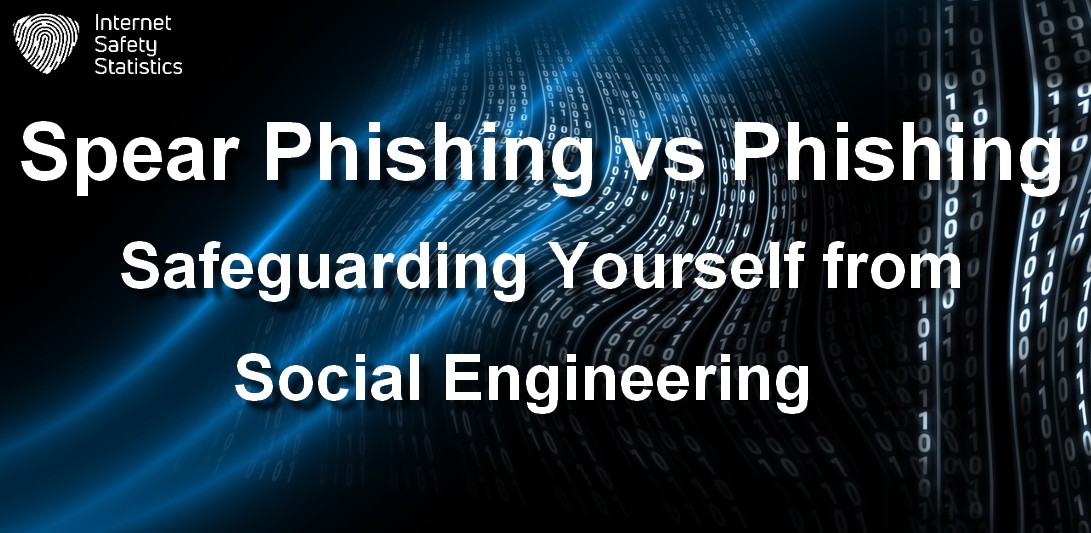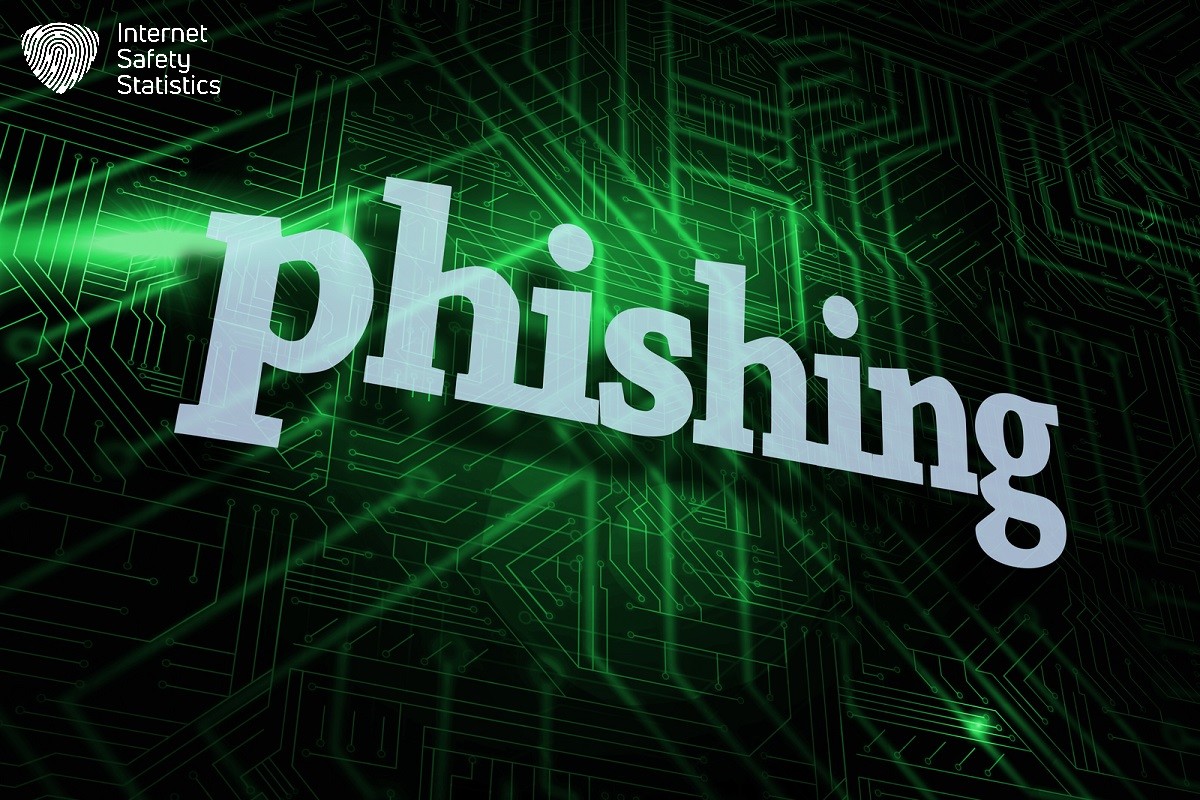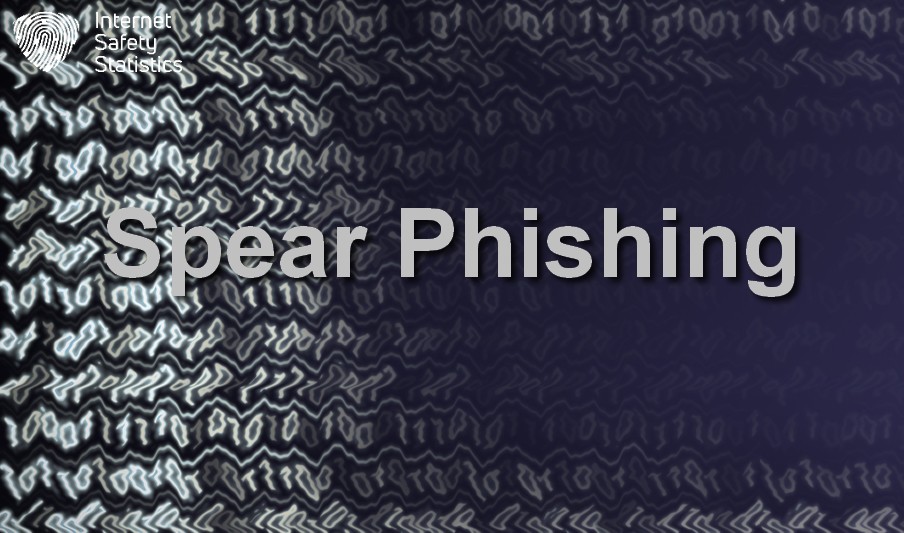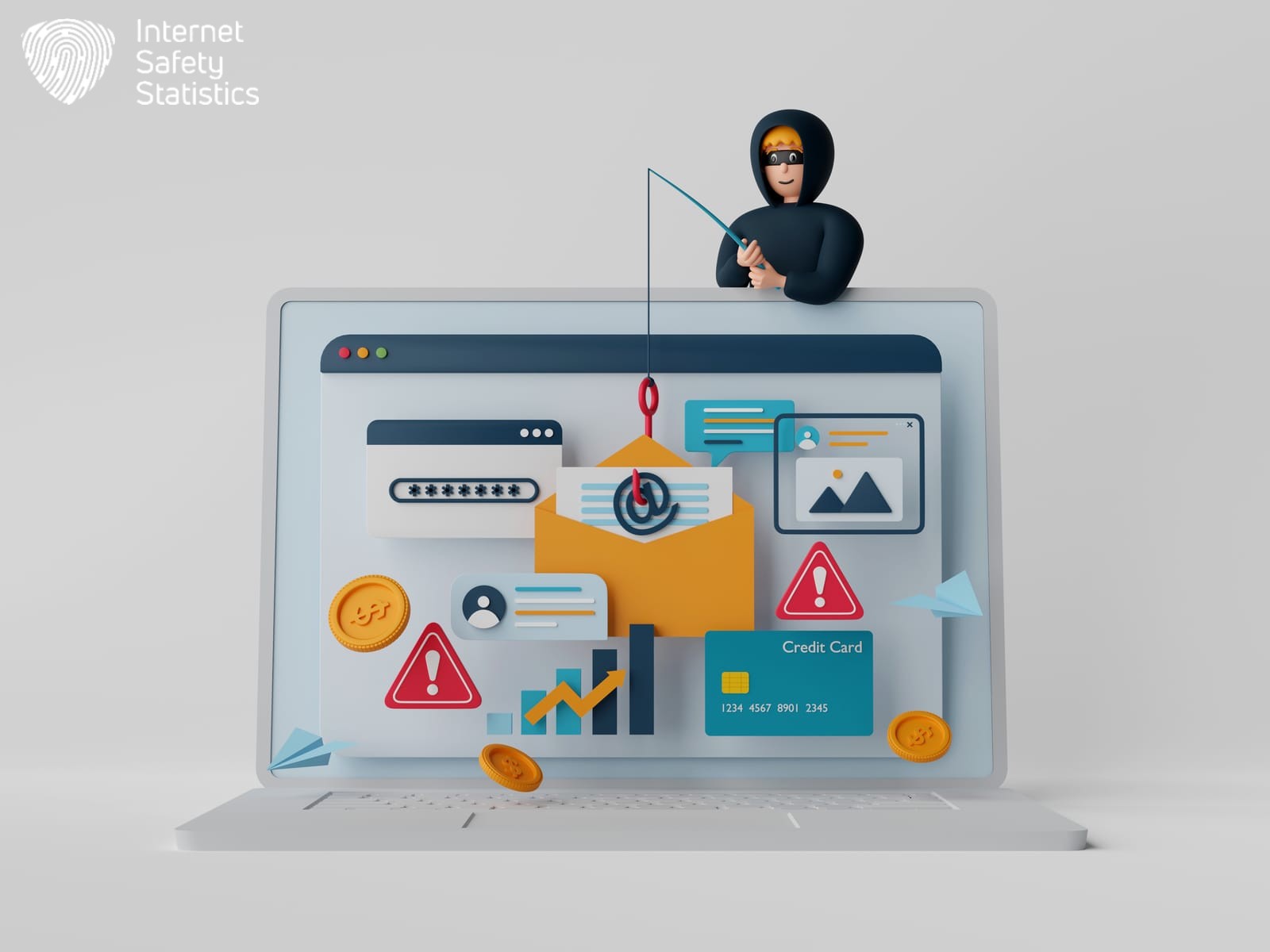
Cyberattack forms evolve daily in a frantic attempt to keep up with the progress in cybersecurity practices. Two distinct forms of cyber attacks stand out among others and fall under the category of social engineering: spear phishing and phishing. The two malicious attacks target the victim’s data. Although there are several similarities between the two types of attacks on data, there are also numerous differences.
This article discusses Spear Phishing vs Phishing to discuss, in detail, the characteristics of each attack, their similarities and differences, and how to protect yourself from each type of attack.
What is Data Phishing?

Data phishing or a phishing attempt is when the attacker uses the information of a trustworthy entity and attempts to scam victims to obtain their information, such as usernames, credit card details, or other personal information. Phishing takes place through numerous outlets, such as emails, texts or fake websites that appear legitimate, to trick individuals into revealing their confidential data.
There are several red flags to look for when you suspect an email to be a phishing attempt. Such red flags include a sense of urgency or an alarming notice, like a claim that the individual’s account has been hacked. The hacker provides the victim with a link to reset their login credentials to allegedly prevent their data from being stolen. It’s difficult for individuals to verify the website in the email or message because cyber attackers exert great effort to mimic reputable websites.
The most vital method to prevent phishing attacks is to try and verify the legitimacy of any requests before sharing any person’s information, primarily through unsolicited emails or messages. Individuals can enable two-factor authentication to fortify their data protection, regularly update passwords and refrain from clicking on any link they suspect might be fraudulent.
Delving into Spear Phishing

Spear phishing is a more targeted attack. Generic phishing is a mass operation where the cyber attacker sends tens of phishing emails or messages, hoping to catch any victim who falls for it. However, spear phishing targets a particular person or group with customised and highly personalised attacks.
Unlike general phishing, spear phishing attackers study their targets. The attacker invests time in research to gather information that will allow them to craft compelling messages that seem to come from a trusted source or a familiar contact. Victims tend to trust this targeted phishing attack because the email or message often contains personal information, references to recent events or specific knowledge about the target’s interests or responsibilities, which lures them to trust the attacker.
Spear phishing, like generic phishing, has the same goal — tricking individuals into disclosing personal information such as financial data, login credentials or access to systems. This personalised nature makes spear phishing more challenging to detect and defeat than regular phishing.

Individuals seeking to protect themselves against spear phishing can train their employees to recognise suspicious emails. They can verify requests for sensitive information through secure channels. Moreover, email authentication methods can help mitigate the risks associated with spear phishing attacks. The overall security of your system can either increase or decrease the system’s vulnerability. So, be sure to apply essential cybersecurity practices and regularly update software and robust profiles.
Spear Phishing vs Phishing: What are the Similarities Between Spear Phishing and Phishing?
While spear phishing is a targeted attack and generic phishing targets a broader audience, they both rely on exploiting human vulnerabilities. Spear phishing and phishing have numerous similarities, from their ultimate goal to their deceptive techniques and the methods used to deceive the victims.
- Deceptive Techniques: Phishing and spear phishing use deception to trick individuals into disclosing private information or taking a specific action through which they can steal their data. Both types of phishing use convincing emails, messages or websites that appear legitimate.
- The same goal: both kinds of social engineering share the same goal: obtaining the victim’s sensitive information, such as personal details or financial data.
- Using social engineering: social engineering cyber attacks emotionally exploit the victim to manipulate their behaviour. The attacks exploit the individual’s trust, urgency, fear or curiosity to take an action that will benefit the attacker.
- They use emails: spear phishing and bulk phishing are usually their primary means of contacting the victims. These emails contain malicious links, attachments or requests for sensitive information.
- Potential Damage: Generic phishing and spear phishing cause significant harm, such as data breaches, financial losses, identity theft and compromised systems.
- Require Vigilance and Stiff Security Measures: There are several similar security measures you can use to employ prevention against both types, such as employee training to recognise suspicious emails, implementing robust cybersecurity protocols, using email filters and regularly updating security software.
Differentiating between Phishing and Spear Phishing?
Despite the similarities between phishing and spear phishing, numerous differences distinguish one from the other.
- Targeting Approach: Phishing attacks are broad and indiscriminate. The scammer casts a wide net by sending generic emails or messages to many recipients, hoping some will fall for the scam. Spear phishing is highly targeted, where the scammer focuses on specific individuals, organisations, or groups. Attackers invest time in researching their targets to create personalised messages that are more convincing.
- Level of Personalisation: Phishing emails or messages are generic and lack personalisation. The words often contain general greetings, vague information or generic requests for sensitive information without any specific context related to the recipient. Spear phishing messages are the opposite − highly personalised and tailored to the target. Since the scammer took their time to learn about the victim, the emails may include specific details such as the recipient’s name, position or recent activities, which make the emails more believable and more challenging to categorise as fraudulent.
- Scope of Attack: Generic phishing aims for a larger number of victims, hoping many will fall for the scam. Spear phishing attacks aim for a smaller and more select group of individuals or organisations, focusing on quality rather than quantity. The scammer seeks higher success rates by tailoring the messages to make them more convincing.
- Complexity and Research: Phishing attacks don’t require much research and are less complex than spear phishing attacks. The scammer might even create a generic template to fill out and send to a mass audience. Spear phishing attacks are more complex and require significant research into the targets to gather information and understand their behaviours to personalise the messages further.
How Do You Protect Yourself From a Phishing Attack?
Protecting yourself from phishing attacks involves general cybersecurity measures and some specific email security measures. Either way, you should be vigilant about implementing these security measures.
- Be Skeptical: If you receive unsolicited emails, messages or calls asking for sensitive information, it’s best to be cautious, especially if they’re from unknown sources. First, verify the sender’s or caller’s legitimacy before responding or clicking on any links.
- Verify the Source: Check the sender’s email address, domain or phone number for legitimacy. Look out for slight misspellings or discrepancies in URLs that mimic legitimate ones.
- Avoid Suspicious Links: To preview any URL before clicking it, you can hover over the link in the email. If the URL looks suspicious or doesn’t match the destination, it’s best to avoid clicking it.
- Use Two-Factor Authentication: If you can use 2FA to protect your online data, we recommend using this option. This authentication adds another layer of security; even if your password is compromised, the attacker must verify your account, and 2FA will prevent that.
- Regularly Update Your Security Software: Keep your antivirus software updated to detect and handle viruses and malware. Your firewall should also be updated periodically to control incoming or outgoing connections.
- Educate Yourself: The cybersecurity world is rapidly evolving, and you must stay informed about common and latest phishing techniques. It’s helpful to seek training for yourself and your team to recognise these attempts and the best practices to respond to them.
- Employ Strong Passwords: Frequently, strong passwords stand between scammers stealing your online data. This fact highlights the need for robust and unique passwords for each of your accounts and regularly changing them. The best tool is a password manager to store your online passwords securely.
- Verify Requests for Sensitive Information: If anyone asks you to reveal sensitive information or financial transactions, you should verify it independently through official channels before responding.
- Refrain from sharing sensitive information on public forums or social media platforms; scammers lurk on these platforms to steal user data.
- Report Suspicious Activity: You should report any phishing attempt to the relevant authorities or your IT security team.
How Do You Protect Yourself From a Spear Phishing Attack?
Protecting yourself from a spear phishing attack, which is more personalised and targeted, requires additional vigilance and tailored security measures. Besides ensuring the regular update of your antivirus software, the following steps will help you face spear phishing attacks better.
- Security Awareness Training: You and your team should learn about the tactics used in spear phishing attacks. Train them to recognise the signs of targeted phishing attempts, such as highly personalised messages or requests for specific information.
- Verify Sender Identity: If the phishing attempt targets you by name, you must verify the sender’s identity, especially if it comes from a familiar but unexpected source. Double-check email addresses for legitimacy and watch for subtle changes or misspellings.
- Think Before Clicking: If the email seems suspicious, avoid clicking links or downloading attachments, mainly if the request is urgent. You can again hover over the link to check if the URL is legitimate.
- Use Email Authentication Techniques: Email authentication methods are highly effective in authenticating incoming emails. You can use services such as Sender Policy Framework, SPF, DomainKeys Identified Mail, DKIM, Domain-based Message Authentication, or DMARC.
- Implement Advanced Security Measures: Advanced email filtering and anti-phishing tools can detect and block spear phishing attacks by analysing email patterns and anomaly detection.
- Restrict Access to Information: Limit the amount of personal or sensitive information available online, especially on public platforms. Attackers often use publicly available data to craft convincing spear phishing messages.
- Utilise Employee Verification Protocols: Implement strict verification protocols for sensitive transactions or information requests. You can employ hierarchical approvals for an additional verification step.
- Monitor and Report Suspicious Activity: Establish a clear plan for reporting suspicious emails or activities with your IT security team and involve your employees in the process to encourage a culture of reporting possible malicious attacks.
- Conduct Simulated Phishing Exercises: A simulated spear phishing attack will help improve your employees’ awareness and responses when faced with actual spear phishing attempts or receiving a spear phishing email.
Future Measures to Protect Yourself from Spear Phishing and Phishing Attacks
Measures to combat phishing and spear phishing continue evolving like all cyber threats. These future-oriented strategies and technologies will bolster protection against such threats.
- AI-Powered Threat Detection: AI and machine learning algorithms are increasingly used to detect and prevent phishing attacks by analysing patterns, behaviours, and anomalies in emails and online communications.
- Behavioural Analytics: Using behavioural analytics will help detect unusual patterns in user behaviour, which allows systems to identify potential phishing attempts based on deviations from normal user behaviour.
- Zero Trust Policy: A zero-trust security policy means that no user or system is automatically trusted and requires continuous verification for access. This approach will minimise the risk of unauthorised access through phishing.
- Advanced Email Authentication: Email authentication standards such as SPF and DMARC allow individuals and organisations to ensure sender authenticity and mitigate email spoofing.
- Biometric Authentication: Integrating biometric authentication methods for sensitive access or transactions adds an extra layer of security beyond traditional passwords or two-factor authentication.
- User Education and Training: Cybersecurity training helps keep employees informed about evolving phishing tactics and how to effectively recognise and respond to these threats.
- Blockchain Technology: Blockchain-based solutions enhance email security by providing tamper-proof records of email communications, which reduces email tampering or spoofing
- Secure Email Gateways: These gateways use machine learning and threat intelligence to filter out phishing attempts before they reach users’ inboxes.
- Endpoint Security Measures: Strengthen endpoint security with robust antivirus software, intrusion detection systems, and regular updates to mitigate the risk of malware infiltration through phishing.
- Collaboration and Information Sharing: Cybersecurity is a societal responsibility, so organisations should encourage collaboration and share information about phishing attacks and their tactics to build a collective defence against evolving threats.
Phishing and spear phishing attacks show no signs of reduction in the future; they will only continue to evolve and utilise advanced techniques, emphasising the need for effective measures to combat them.
